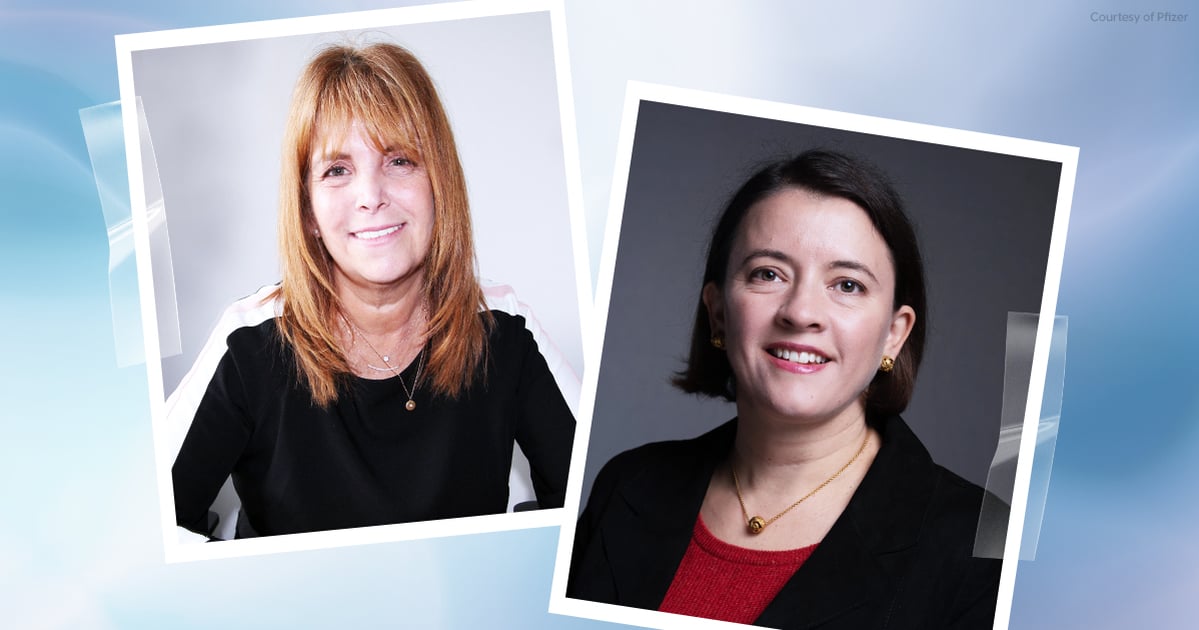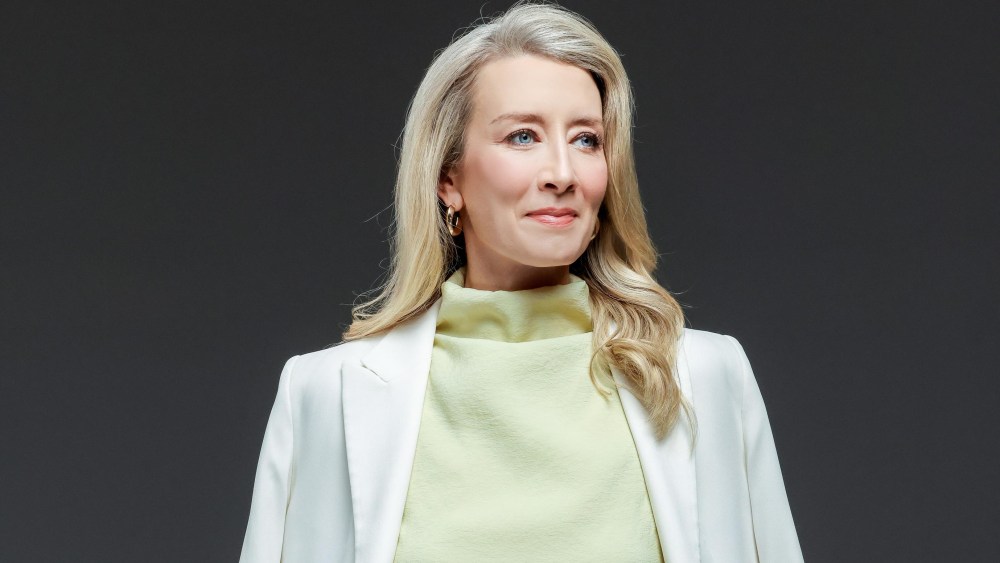The names Alejandra Gurtman, MD, and Barbara Pahud, MD, probably don’t ring a bell. But they should.
Both Dr. Gurtman and Dr. Pahud work for Pfizer and played a major role in the creation of the first and only maternal vaccine to help protect infants and babies from respiratory syncytial virus – aka RSV – at birth and through 6 months of life.
The work they’ve done to get the RSV vaccine to market is personal, both doctors say, as RSV tends to impact the Latine community at much higher rates.
In fact, a study that examined the burden of all common respiratory infections from January 2016 to December 2022 found that 59 percent of the burden of respiratory infections was distributed among Black and Hispanic people (the identifiers used in the study), despite these population groups being ethnic minorities in the US. The hospitalization rate among Black and Hispanic people also accounted for 55.5 percent of all cases. And in 2022, the peak RSV incidence rate in Black and Hispanic children was two to three times that in white children.
Dr. Pahud, a native of Mexico, is a trained pediatric and infectious disease specialist and Pfizer’s director of clinical vaccines. She led the project to recruit diverse clinical trial participants for Pfizer’s RSV vaccine trial before it was approved to ensure that the pool of participants was reflective of those most impacted by the disease. Dr. Gurtman, an Argentine infectious disease specialist, led on the research and development side as senior vice president of vaccine clinical research and development at Pfizer.
Both doctors say the journey to an RSV vaccine was a challenging one. It’s a feat years in the making. Coupled with a global pandemic and medical mistrust among the prime demographic the virus most impacts, there were several hurdles to overcome. So what led these two to break the decades-long spell? They spoke to PS about the process.
PS: Obviously, the RSV vaccine has been a long time in the making. But given the past few years, especially with the tridemic, what kind of pressure did you face to get something to market?
Dr. Pahud: The pressure has been like a pressure cooker for a long time now. For the past 60 years, people have been clamoring [at] pediatricians, begging to get a vaccine for this. Pfizer continued working on RSV vaccine even through the pandemic. The [Maternal Immunity Study for Safety and Efficacy (MATISSE)] maternal study marks one of the first vaccines that was studied in pregnant woman to be administered to pregnant woman. So we’re breaking open this path of doing things the right way – not the backward way of, ‘Oh, we have this vaccine, wouldn’t be nice if we give it to pregnant woman?’ No, this was designed from the very beginning to be given to pregnant woman. But that also meant figuring a lot out along the way.
Dr. Gurtman: Fortunately, when the tripledemic broke out, the race toward an RSV vaccine was well underway, and we could move quickly to get something to market. RSV has always been a seasonal disease, and in 2013, when the NIH discovered the configuration for the virus, we immediately started to look at what vaccine candidates we could develop. By 2018, we had a vaccine candidate, by 2019/2020 we were testing the vaccine on pregnant individuals, and by 2023 the vaccine was FDA-approved. It wasn’t as quick as our COVID vaccine, but still we moved pretty fast to bring a vaccine to market that could be given to protect from the first breath – so the moment of the baby’s born all the way to the first six months. The first 90 days of life are super important because as the babies grow, and the airways get bigger, the disease tends to be less severe.
PS: Tell me about some of the hardships that occurred during the RSV development process.
Dr. Pahud: Recruiting Black and Hispanic populations is tough, and it was at the front and center of my work. When I came to Pfizer from working on COVID vaccines, I had just left a study where my priority was enrolling African American and Hispanic minorities in research. We were doing mobile units and doing enrollment in ways we had never done it before with COVID. So I joined Pfizer with that mentality of nothing is getting in my way. We are getting this population, no matter what.
From the very beginning, even our materials showed Black, white, and Hispanic individuals. It was translated in different languages. We had investigators and coordinators that looked like the population, that spoke their language. Because at least for me, I used to be a pediatrician, I used to recruit participants and if I approached a Mexican mom, as a Mexican mom, and told her, ‘Señora, here’s how this works,’ it’s a completely different story. We also made sure that our in-field recruiters knew that if you’re working to bring in a participant that is from minority population, and it takes you longer to bring them in, that’s OK. Don’t just give that slot to the easiest participant. We are okay with you waiting to get them in here to do what you need to do, because these participants are harder to recruit. And that means we need to make them a priority, or it’s just not gonna happen.
Dr. Gurtman: Once we got the right participants recruited (20% of our participants in the study were Black and almost 28% [Latine], which is pretty amazing), the hardest part was waiting for the results. I shed tears when we got the data back showing 82 percent efficacy and could move forward and apply for FDA approval. But now we face an uphill battle as vaccine rates continue to be low among these populations.
PS: How did you get into this work?
Dr. Pahud: I was born and raised in Mexico City. I did medical school in Mexico City where we do a year of social service. So when you graduate from medical school, you need to give a year back to the country and that’s how we get doctors in rural areas – which I think the United States should do, by the way.
So in that year of social service you need to go and volunteer to be part of the national vaccination campaign. So when I was a doctor, in my little rural town, I knew my population of 15,000 people. I knew had been vaccinated and who wasn’t. And I would send out my nurses to immunize. We would also do an end-of the year vaccine sweeps for even more rural towns – I’m talking middle-of-nowhere places with very low income.
My first time doing that, I went to this very, poor rural area with dirt ground. I put my little site in a corner with a little stool and a table, and everybody came out and offered me coffee, chocolate, bread. They kept checking in on me because they were so grateful that we came out there to vaccinate their children – and I was just blown away by that.
After that, I was like, I don’t care what I do, but I’m going to be working on vaccinations when I grew up. And I did just that. I ended up doing pediatrics because I figured that’s who gets the most amount of vaccines. And then within pediatrics, I did infectious diseases, because that’s where vaccines are made. And then I did a vaccine safety fellowship with the CDC. Then I worked in clinical trials, teaching about vaccine hesitancy and vaccine education in academia. And then landed at Pfizer, where I’m seeing a completely different view from the vaccination process, which is the how these vaccines make it through all these stages and into the FDA, which was the piece that I was missing.
Dr. Gurtman: I’m trained as an adult infectious diseases physician who spent my first half of my career doing medicine and caring for patients, most of them minorities. I worked at Mount Sinai in New York area, and by virtue of where that is located, I had a lot of patients who were Latinos. I saw the disparities firsthand. Unfortunately, the Black community and Latinx community has less access to medical care with more mistrust. Vaccination rates in general are lower and prenatal visits are lower. And that’s something that, I take very seriously and always have. I’ve been at Pfizer for 18 years and I’ve always worked on vaccines.
PS: When it comes to vaccine hesitancy among Black and Hispanic populations, what is your hope for the future?
Dr. Pahud: I am saddened to say that at the beginning of the COVID pandemic, I thought we would see lower vaccine hesitancy after it was over. But we’ve only an increase. As we are starting to tackle less severe diseases (i.e. RSV vs. polio), people become more comfortable with skipping out. That said, the developing world still clamors for these vaccines. So we’re going to continue to deliver them. We’re currently working on a multi-dose vial study to bring the RSV vaccine to the developing world as quickly as we can. And as for the US, we’re hoping as more people become educated about the RSV vaccine, they’re realize how much good it can do. Continuing to cover this information in the news is crucial. It’s one of the primary ways that mothers will understand what they’re up against.
Dr. Gurtman: I think we need to educate pregnant individuals, their partners, and develop education, not only with the obstetrician, but midwives and healthcare providers in general. There’s a lot of work to be done for these communities. Look what happened with COVID, right? No community was more affected. And yet they have vaccination rates sometimes 20% to 30% lower than when you compare it to the white person. I think that the medical community needs to do a lot of work to gain the trust those patients. I would hope that in the next few years we have more and more physicians and healthcare workers that are representative of you and me.
This interview has been edited and condensed for clarity.
Alexis Jones is the senior health editor at POPSUGAR. Her areas of expertise include women’s health, mental health, racial and ethnic disparities in healthcare, diversity in wellness, and chronic conditions. Her other bylines can be found at Women’s Health, Prevention, Marie Claire, and more. Alexis is currently the president of ASME Next, an organization for early-career print and digital journalists.




